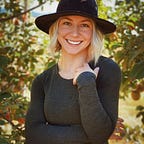Composition — Natasha Knight
Golden Mean / Rule of Thirds
The ‘golden mean’ is fairly standard for photography because our brains are naturally drawn to the concept. This concept divides up a photo into thirds — three vertical columns and three horizontal groups (nine sections total). The content in the picture should correspond with (or lay directly on) the lines created.
Balancing Elements
Balance is seen in photography when the content of a photo looks fair and equal. This can be be shown with symmetry or asymmetrical pieces. How you would show balance without a perfectly symmetrical component would be by counterbalancing an aspect in the picture with something else (compared to just leaving it blank). This comes back to the rule of thirds mentioned above. Once you can start to look at pictures through three equal sections, your photos will start to look more purposeful.
Leading Lines
Leading lines refer to a concept where lines in a picture draw the eye in a direction. Something as simple as a line can really complete an image and direct the viewer’s attention towards the main focus. Until researching this term, I wasn’t aware of the variety of lines that can be used to represent this concept. Leading lines can be found in architecture, nature, interior design, thought out object placement, etc…
Symmetry and Patterns
Symmetry plays an important in not only photography, but just life in general. Symmetry is pleasing to the eye and some simple organization can help transform a piece. There’s something pleasing about seeing near perfect photos because that’s what the human brain is drawn to. A couple of the common types of this photography technique are vertical and horizontal symmetry. Vertical symmetry is the most common form of symmetrical photography — if you draw a line down the center of a photo and the sides reflect each other, that will most likely be visually appealing. Horizontal symmetry is the same idea, but the center line is drawn east to west. This is common with lake reflection photography.
Viewpoint
The viewpoint is about as it sounds. This approach to photography let’s the image gain a sense of creativity. Everyone’s heard of a bird’s eye view, which is just taking a photo from up high looking down (like a bird), but there are a few others that are worth experimenting with. There is also the worm’s eye view; this is taking an image from the ground. This angle is great for taking photos of flowers, people, buildings, etc… The child’s eye view is another unique one. Dropping to your knees for an angle can be helpful when taking photos of pets, children, and even people if you’re wanting to elongate the model. There’s also the selfie viewpoint — this is fairly self explanatory. We’ve all taken a selfie, but one thing to focus on would be also capturing the world behind you as you’re taking the picture.
Background
The background of a photo can make the difference between a snapshot and a beautiful photo. You don’t always have to flaunt the background to make an image, but there some definitely be some attention. One way to do that would be adjusting the aperture of the camera — the wider the aperture, the shorter the depth of field. I personally like this look because it really accentuates on the main focus of the photograph. Although a mountain range makes for a great background, I do appreciate the more out-of-focus and minimal backgrounds.
Depth
The depth of field is definitely an important component in photography. It is essentially the distance between the closest and farthest objects in a photograph. Utilizing this approach can help create a sharp focal point. To change the depth of field, you will start by adjusting the aperture in your camera settings. In my opinion, this can really improve the look of portraits and photos of smaller and more singular objects.
Framing
Framing in photography goes hand-in-hand with the ‘rule of thirds.’ This isn’t necessarily cropping, but instead more of creating an accentuated ‘frame’ out of objects in your photograph. Think of a window, a tunnel, branches, archways, etc… Some frames don’t even have to look that intentional. Finding a unique way to create a frame to point the viewer’s eye to your main focus point.
Cropping
Cropping in photography is a form of manipulation where you can cut out aspects of a photograph that aren’t desired. Cropping can be used for many reasons — cutting out someone or an object from a scene, changing up the aspect ratio, or just overall improvement. Through the cropping of a picture, there can be a lot of different effects one can portray onto that image, even if it’s as simple as just bringing the focus point closer to the view.
https://photographyicon.com/crop/
